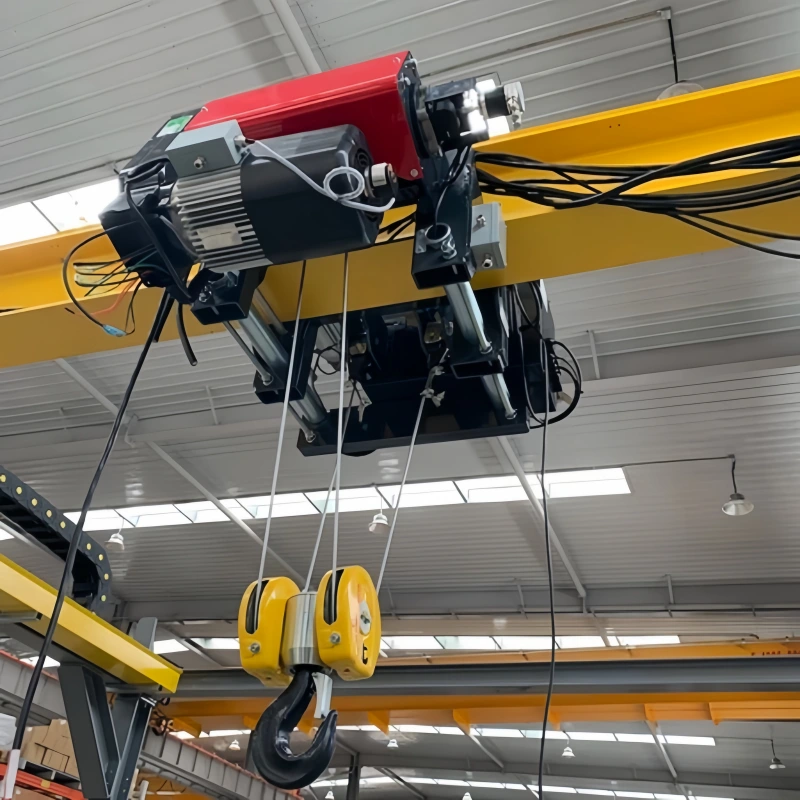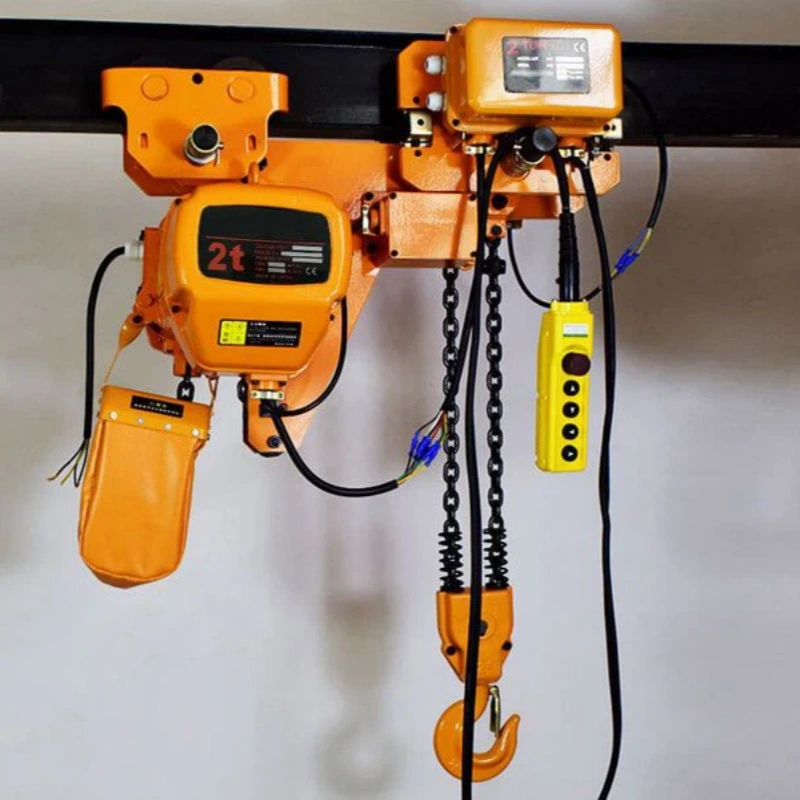You rely on shackle inspection to maintain safety and compliance in rigging operations. The ASME B30.26 checklist sets clear requirements for shackle identification, markings, and visual inspections before each use.
Regular inspection helps you prevent accidents and meet industry standards. Powerful Machinery delivers certified shackles designed for demanding environments, supporting your commitment to safe lifting practices.
Key Takeaways
Regular shackle inspections prevent accidents and extend the life of your equipment. Always check for wear, corrosion, and damage before each use.
Compliance with ASME and OSHA standards is crucial. Inspect shackles for clear identification markings to avoid costly penalties and ensure safety.
Follow a systematic inspection process. Check identification markings, examine for wear and heat damage, and verify the pin condition to maintain safety.
Document every inspection thoroughly. Keep records of findings and corrective actions to demonstrate compliance and commitment to safety.
Use certified shackles from trusted suppliers like Powerful Machinery. This ensures reliability and adherence to safety standards in your lifting operations.
Why Shackle Inspection Matters?
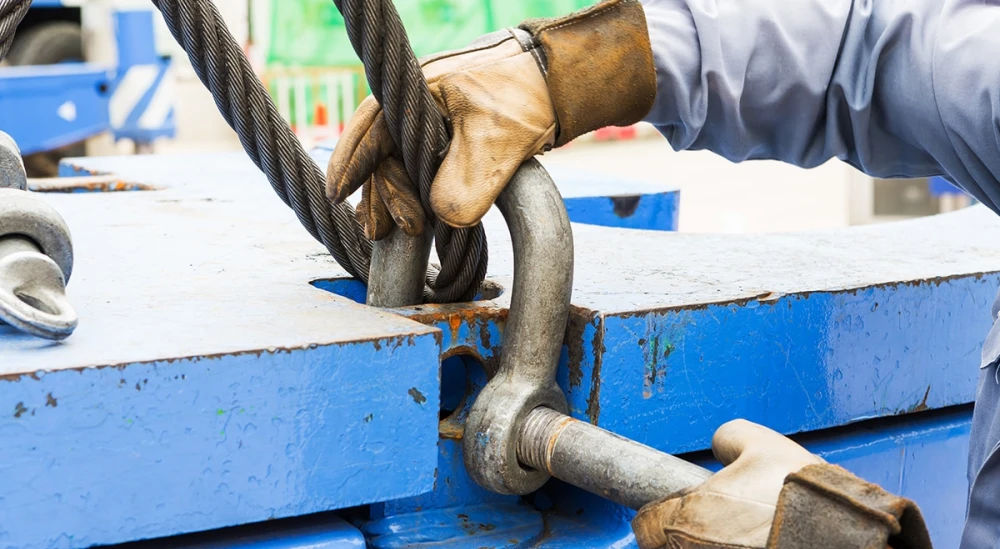
Safety and Compliance
You face real risks every time you use a shackle in lifting operations. Shackle failure can lead to serious incidents, including injuries and property damage. For example, a crane’s overhaul ball once fell due to a wire parting, striking a worker and causing a soft tissue injury.
In another case, a shackle failed during an unintended lift, resulting in injury. These incidents often stem from missing nuts, excessive wear, or severe corrosion. You can prevent these hazards by following a thorough shackle inspection routine.
Regular shackle inspection helps you identify worn or damaged shackles before they fail. You protect your team and equipment by catching issues early. Inspections also extend the life of your shackles and reduce costs by preventing major failures.
You improve workflow and productivity by minimizing unexpected breakdowns. A consistent inspection program fosters a strong safety culture, encouraging everyone to remain vigilant and report hazards.
Tip: Always check for missing nuts, excessive wear (10% reduction of original size), and corrosion before each lift.
Industry Standards
You must comply with strict industry standards to ensure safe lifting practices. Organizations such as ASME and OSHA set clear requirements for shackle selection, inspection, and maintenance. These standards help you maintain the integrity of your rigging hardware and avoid costly penalties.
Organization | Role in Shackle Inspection Standards |
|---|---|
ASME | Sets standards for selection, inspection, use, and maintenance of rigging hardware, including shackles. |
OSHA | Establishes safety regulations that include shackle inspection requirements. |
Non-compliance can result in severe consequences. Penalties range from thousands of dollars in fines to possible imprisonment for falsifying records or harming compliance officers.
Violation Type | Penalty Range |
|---|---|
Willful Violation | $5,000 to $70,000 per violation |
Serious Violation | Up to $7,000 per violation |
Other-than-Serious Violation | Up to $7,000 per violation |
Repeated Violation | Up to $70,000 per violation |
Failure to Abate | Up to $7,000 per day beyond the abatement date |
Miscellaneous Violations | Fines up to $10,000 or imprisonment for fake records, etc. |
Harming Compliance Officer | Up to $5,000 and possible imprisonment of up to three years |
You safeguard your operation by inspecting each shackle, verifying the working load limit, and following all regulatory guidelines.
Shackle Inspection Checklist
Step-by-Step Process
You need a systematic approach for shackle inspection to ensure safety and compliance. Begin by gathering the right tools. Use rigging equipment to handle and position the shackle.
Rely on load measuring equipment to verify that the working load limit matches your application. Visual inspection tools help you examine every part of the shackle for signs of damage or wear.
Equipment Type | Description |
|---|---|
Rigging Equipment | Connects and lifts loads safely during inspection. |
Load Measuring Equipment | Confirms that load limits are not exceeded. |
Visual Inspection Tools | Assists in checking the integrity and safety of shackles. |
Follow these steps for a thorough shackle inspection:
Check Identification Markings
Inspect the shackle for a clear manufacturer’s name or trademark, working load limit, and size. These markings must be legible. Powerful Machinery’s certified shackles always feature precise and durable markings for easy identification.Examine the Body and Pin
Look for cracks, bends, or signs of distortion on the shackle body and pin. Rotate the pin to check for smooth movement. Make sure the threads are not damaged.Inspect for Wear and Corrosion
Assess the shackle for excessive pitting, rust, nicks, or gouges. Surface damage can weaken the shackle and compromise safety.Check for Heat Damage
Look for discoloration, such as blue or straw hues, or weld spatter. Heat damage can alter the metal’s strength and reliability.Verify Pin Condition
Ensure the load pin is straight and the threads are intact. Bent pins or damaged threads require immediate attention.Confirm Proper Fit and Closure
Assemble the shackle and confirm that the pin fits securely. The closure must be tight, with no gaps or looseness.Review Load Rating
Compare the shackle’s working load limit with the intended load. Never exceed the rated capacity.
Tip: Always use certified shackles from trusted suppliers like Powerful Machinery to guarantee compliance with ASME B30.26.
Key Conditions
You must know when to remove a shackle from service. ASME B30.26 outlines several critical conditions that require immediate action:
Excessive pitting, corrosion, nicks, or gouges on any part of the shackle.
Bent, twisted, distorted, stretched, elongated, cracked, or broken load-bearing components.
Signs of heat damage, including blue or straw discoloration or weld spatter.
Missing or illegible manufacturer’s name, trademark, working load limit, or size.
Bent load pins or visibly damaged threads.
If you find any of these conditions during shackle inspection, remove the shackle from service right away. Do not attempt to repair or modify a damaged shackle. Replace it with a certified product that meets all safety standards.
Powerful Machinery’s shackles undergo rigorous testing and quality control, ensuring you receive reliable hardware for every lift.
Note: Regular shackle inspection helps you catch problems early and maintain a safe work environment. Document each inspection and keep records for compliance.
Shackle Markings
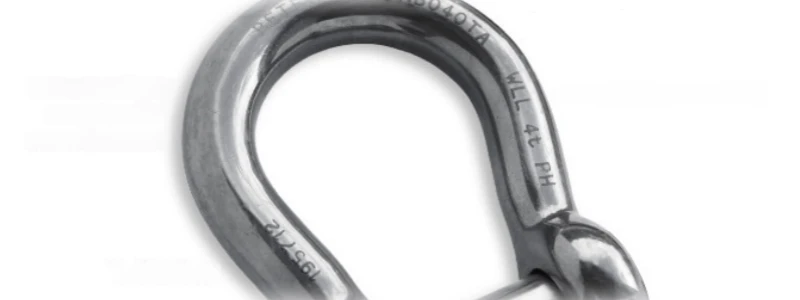
Clear identification on every shackle is essential for safety and compliance. You rely on these markings to confirm that each shackle meets the strictest shackle identification requirements. Proper identification allows you to trace the product’s origin, verify its capacity, and ensure it matches your lifting application.
Body Markings
You should always check the body of the shackle for key identification details. These include the manufacturer’s name or logo, the size or nominal capacity, and the material grade.
These markings help you meet shackle identification requirements and make it easy to confirm that the shackle is suitable for your task. Powerful Machinery’s stainless steel shackles display all required information, supporting your need for traceability and compliance.
Marking Requirement | Description |
|---|---|
Manufacturer’s identification | Logo or name of the manufacturer |
Shackle size or nominal capacity | Size or capacity rating of the shackle |
Material grade or specification | Grade or specification of the material used |
Safe working load (SWL) | The maximum load the shackle can safely handle |
Batch number or traceability code | Code for tracking and traceability purposes |
Pin Markings
You must inspect the pin for clear identification as well. Pin markings often include the working load limit, size, manufacturer identification, and sometimes a heat lot number. These details are vital for traceability and quality control.
They help you confirm that the pin matches the body and that the entire shackle meets shackle marking requirements.
Working load limit (WLL)
Size
Manufacturer identification
Heat lot number
These markings ensure you can trace the shackle’s history and verify its safety in lifting operations.
Legibility
You need to make sure all identification markings remain legible at all times. If you find missing or illegible markings during inspection, you must remove the shackle from service. Illegible identification means you cannot confirm the shackle’s capacity or origin, which puts your operation at risk.
Always choose shackles with clear, durable markings, like those from Powerful Machinery, to maintain compliance and safety.
Tip: Never use a shackle if you cannot read every identification marking. Legibility is your first line of defense against unsafe lifting.
Visual Checks for Lifting Shackles
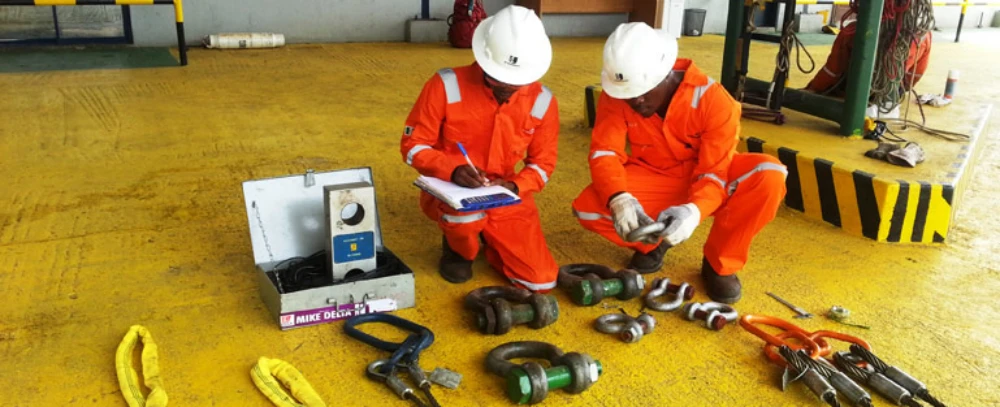
Wear and Damage
You should always begin your inspection by checking for signs of wear and damage on every shackle. Look for any changes to the original shape. If you see more than 10% wear, especially in the shackle eye or pinholes, remove the shackle from service. Common issues include:
Elongation or stretching of the shackle body
Deep nicks, gouges, or scratches
Cracks, bends, or twists in any part of the shackle
Never attempt to repair a damaged shackle. Remove it and replace it with a certified product. Powerful Machinery shackles are engineered for durability, but you must still inspect them before each use.
Corrosion and Deformation
Corrosion can weaken a shackle and reduce its load-bearing capacity. You should check for excessive rust, pitting, or small holes, especially around the threads and grooves. Even if the shackle appears strong, corrosion can compromise its working load limit.
Shackles made from carbon steel offer moderate resistance, while stainless steel shackles from Powerful Machinery provide excellent protection in harsh or marine environments.
Material | Durability Features | Corrosion Resistance Features |
|---|---|---|
Carbon Steel | Strong and cost-effective for general use | Moderate resistance |
Stainless Steel | Highly resistant to corrosion | Ideal for marine or harsh environments |
Alloy Steel | Extremely durable for heavy-duty applications | Good resistance in tough conditions |
If you notice any deformation, such as bending or twisting, remove the shackle from service immediately.
Heat and Pin Condition
Heat damage can seriously affect the strength of a shackle. Watch for blue or straw discoloration, which signals exposure to high temperatures. Weld spatter or arc strikes are also warning signs. Inspect the pin for straightness and smooth threads. If you see any physical distortion or damage, do not use the shackle.
Tip: Always choose lifting shackles from trusted brands like Powerful Machinery. Their stainless steel shackles resist corrosion and maintain strength, even in challenging environments.
Shackle Removal Criteria
You must understand the removal from service criteria to keep your rigging operations safe. ASME B30.26 sets clear criteria for when you should take a shackle out of use. Following these guidelines helps you prevent accidents and maintain compliance.
Marking Issues
You need to check every shackle for clear and legible markings. If you cannot read the manufacturer’s name, working load limit, or size, you must remove the shackle from service.
Missing or faded markings make it impossible to verify the shackle’s capacity or trace its origin. This puts your team at risk and violates industry standards.
Tip: Always inspect markings before each lift. If you find any marking issues, replace the shackle with a certified product.
Excessive Wear
Wear can weaken a shackle and reduce its load-bearing ability. You should measure the original dimensions and compare them to the current state. If you see more than 10% wear, you must remove the shackle from service immediately.
Maximum Allowable Wear | Original Dimension |
|---|---|
10% | – |
Regular inspection helps you catch excessive wear early. Never ignore this removal from service criteria.
Heat or Chemical Damage
Exposure to heat or chemicals can change the structure of a shackle. You should look for discoloration, weld spatter, or signs of chemical corrosion. Even stainless steel can suffer damage from prolonged chemical exposure. Protect shackles from corrosive chemicals or fumes.
Use sealed containers or cabinets for storage in hazardous environments. Regularly inspect shackles to maintain their integrity.
Material Type | Effect of Cold Temperatures | Chemical Exposure Impact |
|---|---|---|
Carbon Steel | Becomes brittle and susceptible to fracture | Degradation from corrosive chemicals |
Stainless Steel | Generally resistant, but can suffer from prolonged exposure | Damage from corrosive chemicals over time |
If you notice any heat or chemical damage, follow the removal from service criteria and replace the shackle.
Modifications
You must never use a shackle that has been modified. Welding, grinding, or bending changes the original design and weakens the hardware. Any modification voids the manufacturer’s certification and violates safety standards. Remove any altered shackles from service right away.
Note: Always use shackles that meet the original specifications. Modifications compromise safety and reliability.
Shackle Inspection Requirements & Frequency
You must follow a structured approach to meet shackle inspection requirements and maintain a safe work environment. ASME B30.26 outlines three main types of inspection: initial, frequent, and periodic. Each type serves a specific purpose and helps you identify issues before they become hazards.
Initial Inspection
You should always perform an initial inspection when you receive new shackles. This step ensures that each shackle meets industry standards and is free from defects.
Check for missing tags, cracks, excessive wear, and any manufacturing flaws. Powerful Machinery shackles arrive fully certified, but you must still verify compliance before putting them into service.
Type of Inspection | Purpose and Requirements |
|---|---|
Initial Inspection | Verify compliance, check for defects, confirm markings and load ratings |
Frequent Checks
You need to conduct frequent checks before each use or at the start of every shift. These hands-on inspections help you spot visible damage, wear, or missing markings. Look for cracks, bent pins, or signs of corrosion. Address any issues immediately to prevent accidents.
Type of Inspection | Purpose and Requirements |
|---|---|
Frequent Inspection | Visual check for damage, wear, and marking legibility before each use |
Periodic Inspection
You must schedule periodic inspections based on service conditions. For normal service, inspect shackles at least once a year. In severe environments, increase the frequency to monthly or quarterly. Special service conditions may require inspections as recommended by a qualified person.
Service Condition | Recommended Inspection Interval |
|---|---|
Normal Service | Yearly |
Severe Service | Monthly to Quarterly |
Special Service | As recommended by a Qualified Person |
Document each periodic inspection to comply with OSHA and ASME standards. Powerful Machinery supports your safety program by providing products that meet or exceed these requirements.
Documentation
You need to keep accurate records of every shackle inspection. Record the date, inspector’s name, findings, and any corrective actions. Maintain written documentation for traceability and compliance.
Proper record keeping helps you demonstrate your commitment to safety and supports audits or incident investigations.
Aspect | Details |
|---|---|
Documentation & Record Keeping | Written records of inspections and certification of safe-to-work must be gathered and kept for traceability. |
Tip: Consistent documentation and regular inspections help you maintain a safe workplace and meet all regulatory requirements.
Best Practices for Lifting Shackles
Storage and Handling
You protect your equipment and extend its life by following smart storage and handling practices. Store shackles on racks, hooks, or shelves to prevent tangling or crushing. Keep shackles in a clean, dry, and temperature-controlled area. This prevents material degradation and rust.
Label storage areas by type, capacity, or size. You reduce handling errors and make identification easier. These practices help you maintain a safe and organized workspace.
Environmental Factors
You must consider environmental factors when using shackles. Humidity and temperature changes can affect performance. Materials with strong dielectric properties resist electrical conduction, even in high humidity and extreme temperatures.
Non-porous and durable shackles minimize the risk of internal breakdown over time. Powerful Machinery’s stainless steel shackles offer excellent resistance to corrosion and harsh conditions. You ensure reliability by choosing products designed for challenging environments.
Side Loading
You avoid side loading to maintain safety. Center the load in the bow of the shackle. Inspect the body for bending, which signals excessive side loading. Never use round pin shackles in applications with multiple sling legs or where side loading may occur.
If side loading happens, reduce the Work Load Limit according to guidelines. You prevent accidents and equipment failure by following these best practices for use.
Training and Support
You improve safety and efficiency with proper training and support. Securely tighten the shackle pin and use measures to prevent it from backing out. Inspect the pin, ears, and bail for damage before each lift. Avoid sudden movements that could shock the rigging equipment.
Never weld on the shackle body or pin. Use only the manufacturer’s replacement pin. Position the shackle to pull from bail to pin, not side-to-side. Keep the pin away from the running portion of a sling body. Do not exceed the Safe Work Load Limit.
Consult Powerful Machinery for guidance on chemical effects and heat range limits. Remove any shackle from service if the SWL marking is illegible. Powerful Machinery offers expert support and training resources to help you follow industry-leading practices.
Tip: Consistent application of these practices ensures safe lifting operations and maximizes the value of your rigging hardware.
Conclusion
You protect your team and equipment when you follow the ASME B30.26 shackle inspection checklist. Regular shackle inspection helps you spot problems early and avoid costly accidents.
Use best practices every time you handle a shackle. For certified products and expert support, reach out to Powerful Machinery. Your commitment to safety starts with the right tools and knowledge.
FAQ
What is the most important step in shackle inspection?
You must always check for clear identification markings and visible damage. These steps help you confirm the shackle’s capacity and integrity before every lift.
How often should you inspect lifting shackles?
You should inspect shackles before each use and perform a detailed inspection at least once a year. Increase inspection frequency in harsh or demanding environments.
Can you repair a damaged shackle?
Never repair or modify a damaged shackle. Remove it from service immediately. Use only certified replacements that meet ASME B30.26 standards.
What should you do if shackle markings are illegible?
You must remove the shackle from service. Illegible markings prevent you from verifying load limits and compliance. Replace it with a properly marked, certified shackle.
Why choose Powerful Machinery shackles?
You gain peace of mind with Powerful Machinery shackles. These products meet strict international standards, offer excellent durability, and feature clear markings for easy inspection.

